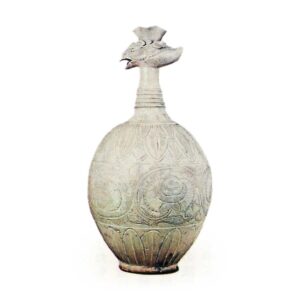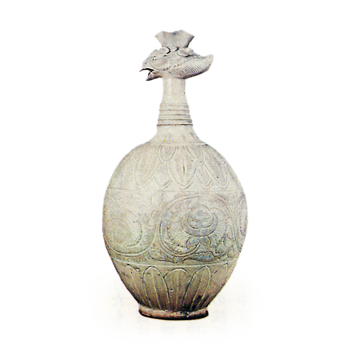
This kiln was located in Yonghe Town, Ji’an, Jiangxi Province, China, and is also called Yonghe Kiln after the name of the town. There are various descriptions of this kiln in literature (see “Yonghe Kiln” section), but there seems to be a significant gap between these descriptions and recent findings. In 1937, the British scholar Blankstone investigated the site of this kiln and unearthed a rare masterpiece in the British Museum, a Tang white porcelain vase with a painted floral motif and similar shards, which clearly indicates that this kiln was active by the end of the Tang dynasty at the latest and produced excellent white porcelain. It is clear that this kiln was active by the end of the Tang dynasty at the latest and produced excellent white porcelain. However, since no similar shards were unearthed during postwar research in China, this theory has been questioned by some, but since several objects similar to the British Museum’s Fengshu vase were later discovered in Southeast Asia and elsewhere, it is generally accepted that they were produced at the Jizhou kiln in the late Tang dynasty and the 5th dynasty.
However, the most famous Jizhou ware and the one with the most abundant artifacts is a cup-shaped cup-shaped cup called “Ji’an Tianmu”, which was probably started by a potter who moved from Jianyao, Fujian Province during the Southern Song Dynasty. It is made of a dark brown glaze with tortoiseshell-colored glaze spots. According to Chinese reports, celadon, white porcelain, white porcelain iron sand, and blue and white porcelain were also produced during this period, as well as blue and white porcelain and blue and white porcelain after the Yuan dynasty.



